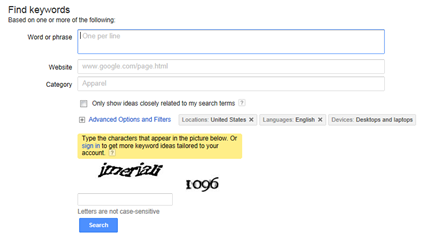Increase Lead Generation by Optimizing for the Right Keywords
Keywords are the building blocks to the content you create for your online lead generation efforts and a vital element to its ultimate success.
What’s in a Keyword?
Keywords are the targeted words and phrases found to attract traffic to your website. Here’s an example:
If you run a web services company, and want to connect with business owners looking for web services, then you need to hone your keywords around subject-matter that your audience may search to find a company like yours.
Examples of potential keywords:
- marketing services company
- marketing services
- marketing company
Once you build a list of keywords like these, about 100-150, it’s time to get down to the business of honing your keyword list into a lean-mean, lead generation tool.
Focusing your Keyword list
The purpose of keywords is to drive the search capacity of your online content. In other words, it’s the keywords that search engines find when someone does a search online.
Keeping that in mind, consider the volume of content that is published online every day, all over the web.
There are millions of posts, press releases, articles, tweets, reports, videos and other content put online every day.
How do you determine which keywords are best? Use Google’s Keyword tool. It’s a free source to conduct keyword research and find a long list of alternatives to consider. The way to identify a short list of potent terms, filter your initial list by two key criteria.
- Search Volume (Global or Local)
- Competition
 Keyword search volume speaks to the amount of times every month your keyword is searched. So, if your company has no geographic ties, a/k/a you do business globally, you should look at the global search volume to see what the worldwide search is for each of your keywords.
Keyword search volume speaks to the amount of times every month your keyword is searched. So, if your company has no geographic ties, a/k/a you do business globally, you should look at the global search volume to see what the worldwide search is for each of your keywords.
Take the top 75% of search volume, preferably with at least 250 searches a month, and then take a look at the next statistic.
Competition refers to the difficulty you would have to rank on your selected keyword. You want to look for the “low” competition words.
Target the Low Hanging Fruit
Using the above criteria, you can easily identify the “low-hanging fruit” which has the lowest competition keywords with the highest search volume.
For example, these keywords, showing “low” competition, but higher monthly searches, are considered “low-hanging fruit”. Any keywords with medium or high competition are harder to rank for.

Need a little guidance in targeting the low-hanging fruit in your industry? It may be time to reach out to an inbound marketing agency with the experience in successful keyword implementation.

